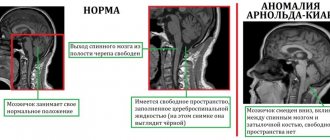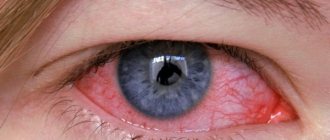What is tetanus?
Tetanus (lat. tetanus) is a zooanthroponotic bacterial acute infectious disease.
In the medical literature, tetanus is defined as a dangerous, fatal bacterial disease that causes severe damage to the nervous system, leading to the development of tonic tension in the skeletal muscles and multiple convulsions.
The causative agent is the tetanus bacillus, which exists in the external environment and is resistant to antiseptics and disinfectants, retaining its viability even at a temperature of 90°C for 2 hours.
An oxygen-free, humid environment and a temperature of 37°C are favorable conditions for the germination of bacterial spores that produce dangerous tetanus toxins. Alkaline environments, heat and sunlight are destructive to microorganisms.
Story
Doctors from the ancient civilizations of Egypt, Greece, India and China drew attention to the connection between injuries and the development of tetanus. The clinical picture of this disease was first described by Hippocrates, whose son died of tetanus. Galen, Celsus, Aretaeus, Avicenna, Ambroise Paré and other famous doctors of antiquity and the Middle Ages studied this disease.
The scientific study of tetanus began in the second half of the 19th century. The causative agent of tetanus was discovered almost simultaneously in 1883 by the Russian surgeon N. D. Monastyrsky and in 1884 by the German scientist A. Nikolaier. A pure culture of the microorganism was isolated in 1887 by the Japanese microbiologist S. Kitasato, who in 1890 obtained tetanus toxin and, together with the German bacteriologist E. Behring, created an antitetanus serum. In 1923, the French immunologist G. Ramon obtained tetanus toxoid, which was used to prevent the disease.
Causes
The bacteria that cause tetanus exist in the environment and do not themselves pose a danger to humans, because they are activated only in an airless environment.
Infection does not occur when swallowed, since toxins are not absorbed through the mucous membranes.
The ideal conditions for their spread are human blood.
Entering the human body through damaged areas of the skin, bacterial spores begin to actively multiply and produce a deadly toxin.
Infection occurs through contact with contaminated objects, as a result of wounds, burns, frostbite, medical interventions and other things. Also dangerous are household injuries, such as punctures with a nail, cuts with a knife, etc.
The source of tetanus bacillus can be birds, animals, or humans, with whose feces the bacterium ends up in the environment. An infected person is not contagious to others, but he himself is in danger, because the disease can begin either on the first day or several months after the tetanus pathogen enters the body.
Prevention
Prevention of the disease is carried out in three directions:
- Prevention of injuries and health education among the population.
- Specific prevention as planned by administering tetanus vaccine to all children from 3 months to 17 years according to the vaccination schedule. Adults receive revaccination every 10 years.
- Emergency prevention is used for both vaccinated and unvaccinated people for: wounds and injuries when the integrity of the skin and mucous membranes is violated.
- wounds and operations of the gastrointestinal tract.
- burns and frostbite of II-IV degree.
- childbirth and abortion outside medical institutions.
- gangrene or tissue necrosis, long-term abscesses, carbuncles, ulcers, bedsores.
- animal bites.
Tetanus symptoms
The incubation period of the disease varies from several days to 1-2 months, but on average it is 1-2 weeks, in each individual case it occurs individually. However, the disease is more severe and life-threatening in cases of a short incubation period.
Any infectious process, including tetanus infection, consists of several successive periods. The clinical picture depends on the stage of tetanus, among which the following can be distinguished:
- Mild - lasts no more than 21 days, is characterized by moderate spasms of the facial and back muscles , cramps may be completely absent, the temperature remains normal or slightly elevated.
- Moderate - manifested by muscle damage with typical signs, the appearance of cardiac tachycardia (rapid heartbeat) and a strong increase in temperature , convulsions with a frequency of 1-2 times per hour lasting no more than 30 seconds.
- Severe – defined by frequent and intense convulsions and a particularly characteristic facial expression.
- Extremely severe is Brunner's encephalitic tetanus with damage to the medulla oblongata and upper parts of the spinal cord, in which the cardiovascular and respiratory centers are located.
The onset of tetanus is usually , characterized by a dull nagging pain at the site of an already healed injury. The following symptoms of tetanus are specific and defining:
- convulsive contractions of the masticatory muscles, which lead to difficulty opening the mouth;
- the appearance of the so-called “sardonic smile”, in which the forehead wrinkles, the eyes narrow, the lips stretch into a smile, and the facial expression takes on an evilly mocking expression (see photo above);
- swallowing disorders due to convulsive spasms of the pharyngeal muscles, which are characterized by pain when swallowing;
- stiffness of the neck muscles.
The symptoms characteristic of tetanus in humans are the first 3. They are the ones that make it possible to distinguish it from other diseases. The fourth symptom, appearing separately from the others, is not a sign of the disease.
After infection and the appearance of the first defining signs, both children and adults develop an additional set of the following symptoms:
- Regardless of the degree of wound healing, a person may still experience pain after a puncture;
- constant tension in the muscles of the arms and legs without relaxation, even during sleep, which does not affect the hands and feet;
- clear drawing of the contours of skeletal and all other muscles due to their tension;
- very strong tension in the abdominal muscles;
- tension and elongation of the legs;
- disturbances in the processes of breathing, urination and defecation due to strong muscle tone;
- the appearance of a condition when, in a lying position, the body arches in such a way that the buttocks and the back of the head become the points of contact with the surface;
- development of cramps against the background of constant muscle tension.
Convulsive attacks can be short-lived (from 1-3 minutes) and repeated from 2 to 10 times a day. They are present throughout the body, not just the eye muscles. Can be caused by visual, acoustic and other stimuli.
It is worth paying attention to one of the important indicators - this is the time that passed from the appearance of the “sardonic smile” to the convulsions. If it is more than two days, then this significantly improves the prognosis for recovery.
The critically severe period of the disease is considered to be from 7 to 14 days, since asphyxia and cardiac paralysis can occur due to convulsions and muscle spasms, leading to death.
There are nonspecific forms of tetanus. These include:
- local - a mild form of the disease, in which muscle spasms occur only in the area adjacent to the wound;
- ascending - the appearance of spasms at the site of injury with gradual damage to the spinal cord until the development of classic signs of tetanus;
- Brunner's tetanus (bulbar) is the most severe form, in most cases ending in death, during which infection begins from the upper parts of the spinal cord, quickly affecting the medulla oblongata.
These forms are very rare, so when determining the disease, you should focus on the classic symptoms of tetanus.
Complications of tetanus
Complications of tetanus pose a danger. Uncontrolled seizures can lead to dislocations, fractures of bones and ridges, rupture of muscles and tendons, and painful shock. Complications also include the following:
- inflammation and pulmonary edema;
- bronchitis;
- pneumonia;
- myocardial infarction;
- thrombosis and pulmonary embolism;
- sepsis;
- temporary cranial nerve palsy;
- limitation of passive movements in the joint;
- compression deformation of the spine, which in some cases can persist for up to 2 years.
In children, tetanus is complicated by pneumonia; in later stages, digestive disorders and anemia occur.
The presence of complications of tetanus directly depends on the form of the disease, the timeliness and quality of qualified medical care.
Diagnosis of tetanus
The presence of a contaminated wound and three typical symptoms in the clinical picture confirm the presence of tetanus. An important diagnostic element at an early stage is the collection of anamnesis, which allows one to determine the nature and time of injury, obtain data on the presence of vaccination, signs of infection, and begin treatment in a timely manner.
Laboratory tests are of secondary importance in making a diagnosis. At the initial stage, no changes occur in the cerebrospinal fluid, the toxin is not detected in the blood, and the presence of antitoxic antibodies indicates that the patient has a history of vaccination against tetanus.
In addition, this diagnostic method is rarely used due to the length of wait for results. , histological studies of damaged tissues, microscopy of smears are still .
When making a diagnosis in the early stages, it is very important to differentiate tetanus from gingivitis, periostitis, inflammation of the mandibular joints . At later stages, the clinical manifestations of tetanus become more pronounced, but it is worth special attention to separate them from epileptic seizures, strychnine poisoning, meningitis, encephalitis, the consequences of traumatic brain injury, and hysteria in women .
In newborns, the manifestations of tetanus should be distinguished from the consequences of birth trauma and meningitis. When at this age doubts arise when making a diagnosis, they resort to laboratory tests of cerebrospinal fluid puncture. In older children, tetanus should be distinguished from hysteria and rabies.
To correctly determine the disease, you should contact medical institutions, since in most cases a qualified specialist does not have any difficulties diagnosing tetanus.
Treatment of tetanus
After carrying out diagnostic measures and confirming the diagnosis, the infected person is immediately hospitalized in the hospital, and treatment of tetanus occurs in an intensive care unit or hospital under the supervision of doctors.
It is extremely important to constantly monitor the general condition of the patient. The main goal of medical intervention is to quickly neutralize toxins and remove them from the body.
To neutralize toxic substances in the blood, the patient is administered antitetanus serum or specific immunoglobulin , the dosage of which is determined by an infectious disease doctor individually, taking into account the severity of the disease and the characteristics of the body.
The site of the lesion is opened and treated surgically ( tissues infected with tetanus bacillus are excised ), and injected with antitetanus serum. For subsequent healing of the damaged area, preparations with proteolytic enzymes are used . The sooner anti-tetanus measures are taken, the easier the disease is tolerated and the consequences are minimized.
symptomatic therapy is also , which is aimed at preserving vital functions. If necessary, a catheter is installed in the bladder, a gas outlet tube is installed in the rectum, and in cases of respiratory dysfunction, artificial ventilation of the lungs is performed . The patient must receive anticonvulsant treatment:
- prevention of bedsores;
- dehydration and bacterial complications;
- blood oxidation by shifting pH levels;
- decrease in temperature;
- measures are being taken to organize a medical and protective regime.
An important role in the recovery process is given to the conditions of the patient's detention. The infected person must be placed in a separate darkened room, and, if possible, eliminate or minimize exposure to auditory, visual and tactile stimuli . Another necessary condition for a speedy recovery is proper nutrition ( PP diet ).
The patient should be provided with a full menu rich in vitamins and microelements to strengthen the immune system. If the patient cannot eat food on his own, it should be administered through a tube.
It is worth remembering that once you have had tetanus, the human body does not develop long-term immunity and it is possible to become infected again with this disease . In addition, after complete recovery, the patient needs clinical observation and consultations with a neurologist for at least 2 subsequent years.
How to avoid infection
Large numbers of Clostridium tetani colonies are observed in horses and cattle. Also on pastures and in the land, where manure is used in the form of fertilizers. The most favorable environment is moist soil and plenty of fertilizer.
For this reason, people living in rural areas and having direct contact with large animals should be extremely vigilant.
Prevention of tetanus infection is carried out in three stages:
- Sanitary education conversation for the population.
- Precautionary measures:
- When working on land or in the barnyard, wear closed clothing and rubber gloves .
- Carry out high-quality wound treatment . Deep or purulent injuries are best treated with surgical treatment.
- Protect damaged skin . When leaving home, it is more advisable to cover wounds with gauze or bandage. After a walk, treat the wound with peroxide.
- Tetanus vaccination - DTP. It also includes immunization against whooping cough and diphtheria. In the first year of life, babies receive three vaccinations. The first is for children of three months, the second is from 4 to 5 months, the third is for six months.
Adolescents 7 and 16 years old receive it through routine vaccination.
Unfortunately, the vaccine only protects for 10 years. Therefore, it is worth revaccinating every decade.
If more than 5 years have passed since the last injection of toxoid, and severe contamination of the damaged skin has occurred, then an unscheduled anti-tetanus injection is necessary. Carrying out such a procedure also applies to planned pregnancy, or upcoming participation in hostilities. This preventative precaution is carried out due to the fact that in many people the properties of toxoid disappear after 5 years.











